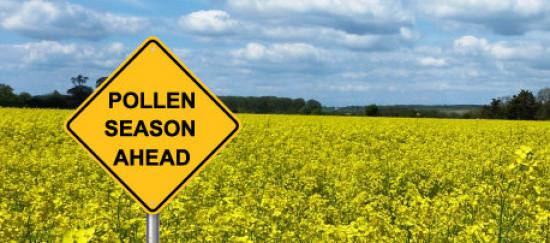
Blowing in the Wind by Patrick Garretson, L.Ac.
Patrick GarretsonShare
As spring emerges into its fullness, I am reminded of that thing which initially sparked my enthusiasm for acupuncture and Chinese medicine-- allergies. Most of us come to this medicine because of some healing story from our life, whether our own or someone close to us. A story that changed the way we see our bodies and its delicate interplay with the rest of the world.
For me, acupuncture solved a multi-year problem I had with dreading what is otherwise a season of much joy and celebration. I had been routinely plagued by month-long episodes of debilitating hayfever attacks in the Spring that left me at times completely incapable of being outside. As a gardener and horticulturalist, so this was certainly not a good situation.
To my amazement, one session of acupuncture was usually able to alleviate my symptoms for multiple days, and with repeated sessions, my ability to engage in outdoor activity resumed. Eventually, through a combination of acupuncture treatment and herbal prescription, my Spring time allergy attacks were reduced to almost nothing.
It was like magic.
Except that it isn’t. At least not in the sense that we are unable to explain it. From the traditional theoretical model we use in acupuncture, allergies--and particularly hayfever--have a really direct pathology that we can identify; the wind. Wind in Chinese medicine is one of the primary pathological influences, with a multitude of manifestations.
With allergies of course, wind is the vehicle through which pollen, dust, and other microscopic bits enter our respiratory system and wreak havoc. Within the complex system of acupuncture points, there are many which are said to “alleviate wind,” as well as numerous herbs. Symptoms of wind include things like itching, twitching, coughing, sneezing, headaches, stiffness, and clouded thinking. If you’ve suffered from allergies, this all sounds familiar.
Wind is also the pathological factor that is associated with the element of Wood, of which the Liver/Gallbladder pair belong to. It’s important to note that the Liver opens to the eyes (Yang organs don’t have a respective sense organ) which are generally always affected by seasonal allergy attacks. And the season of Wood is Spring. So from a 5-elements standpoint, Spring is the most logical season for allergy attacks. With any acupuncture treatment where wind is involved, a strong emphasis will be on the liver function, and particularly on blood, which if not full and strong can make way for wind to enter the channels.
I used to engage in seasonal “liver cleanses”, but have since learned better- please don’t do this. The liver doesn’t need your cleansing, though it may need support in doing its job. The liver is often described as a filter for the body- which is very pertinent in terms of thinking of cleaning blowing pollen and debris from the system. It’s also important to note that the liver, unlike your fish tank’s filter, is alive. It cleans itself daily- so long as it’s not overwhelmed by toxins and disease. Ways of supporting the liver include, acupuncture, eating fresh greens in the spring- particularly nettles- consuming raw omega-6 oils (flax, borage, etc), and getting adequate sleep. Beyond that are a variety of herbs which I won’t go into here- see your acupuncturist or herbalist if you need something more than basic dietary advice.
From a biomedical standpoint, we also can find strong indications for how acupuncture alleviates symptoms of seasonal allergies. We know that the major reason for all allergic reactions is inflammation, and acupuncture has repeatedly been shown to effectively and safely stimulate the bodies natural anti-inflammatory response.
More recently, a study was done specifically on acupuncture’s role in alleviating seasonal allergy. The clinical trial involved three groups, one a control group that received no acupuncture and just regular anti-histamine medications, a second group that received “sham” acupuncture and medication, and a third that received actual acupuncture and medication. The lattermost group was able to rely on their medications far less than the previous two groups, though eventually the sham group cam up to roughly even. Researchers in such cases always point to “placebo” effect. But that’s ok, we won’t tell them that mind is always involved in healing- let’s see how long it takes for science to catch on.
